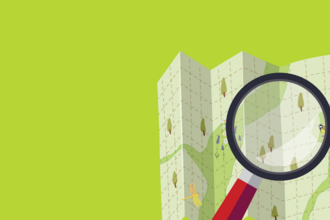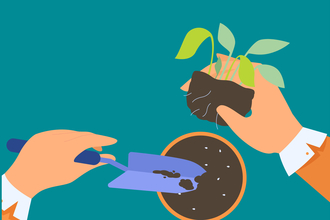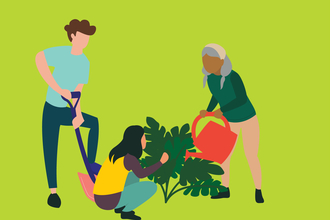
Put a pond in your garden!
Want to help the wildlife in your garden? A healthy garden pond will support a greater range of wildlife than any other garden feature. Either a small, shallow pebble pond, or upcycled washing up bowl will have an amazing impact.
The smallest of ponds can be home to an interesting range of wildlife, including damsel and dragonflies, frogs and newts, and a pond can also become an excellent feeding ground for birds, hedgehogs and bats.
What do I need?
Ponds in pots aren’t only cheap or free, they are easy to create and even easier to take care of. Mini ponds can be constructed from a range of containers! Get creative and upcycle. A washing-up bowl, large plant pot, or disused sink can all be repurposed as ponds, providing you make sure wildlife can get in and out with some rocks or logs.
When is the best time to build my pond?
You can build a pond at any time during the year, but if you start in autumn or late winter, it will get established much quicker, ready for the flurry of activity in the spring.
Get going and follow these simple steps:
Step 1: Pick your pot.
Your upcycled pond will need a wide ‘neck’ so wildlife can get in and out. Other than that, the shape really doesn’t matter!
Step 2: Choose a spot.
Your pond will want light, but not full sunlight all day. You can dig a hole and sink your container, or just have it sitting on top.
Step 3: Construct your pond.
Check that its watertight. If not, use a piece of pond liner. Add a layer of gravel and rocks. Use logs or stones to create a range of depths and a slope for creatures to climb in and out.
Step 4: Fill your pond.
Use rainwater as tap water contains chemicals.
Step 5: Start planting.
Be careful not to overcrowd your pond, you only need one or two plants.
Step 6: Watch as wildlife comes to visit,
Tell your neighbour to get one too! A network of small ponds in a neighbourhood could be even better than just one large one.
What plants will work best
Plants are an important part of your wildlife pond, oxygenating the water and providing food and shelter. Use UK native species where possible.
You can get these plants suitable for small ponds from your local garden centre:
Miniature waterlily
Lesser spearwort
Starwort Flowering rush.
Can't build your own pond? Don't worry - here are some other ideas!
Dig a shallow channel or hollow which will allow excess rainwater to pool. This will slow storm water run-off and add wildlife habitat to your garden.
Fill saucers and bird baths with water for wildlife to have a drink or a splash; add marbles or stones to a shallow water dish to allow a perch for bees.
Make a mini bog garden. Simply fill your container or space with soil and plant it with marginal plants such as marsh marigold, water forget-me-not, silver weed or gipsywort.






